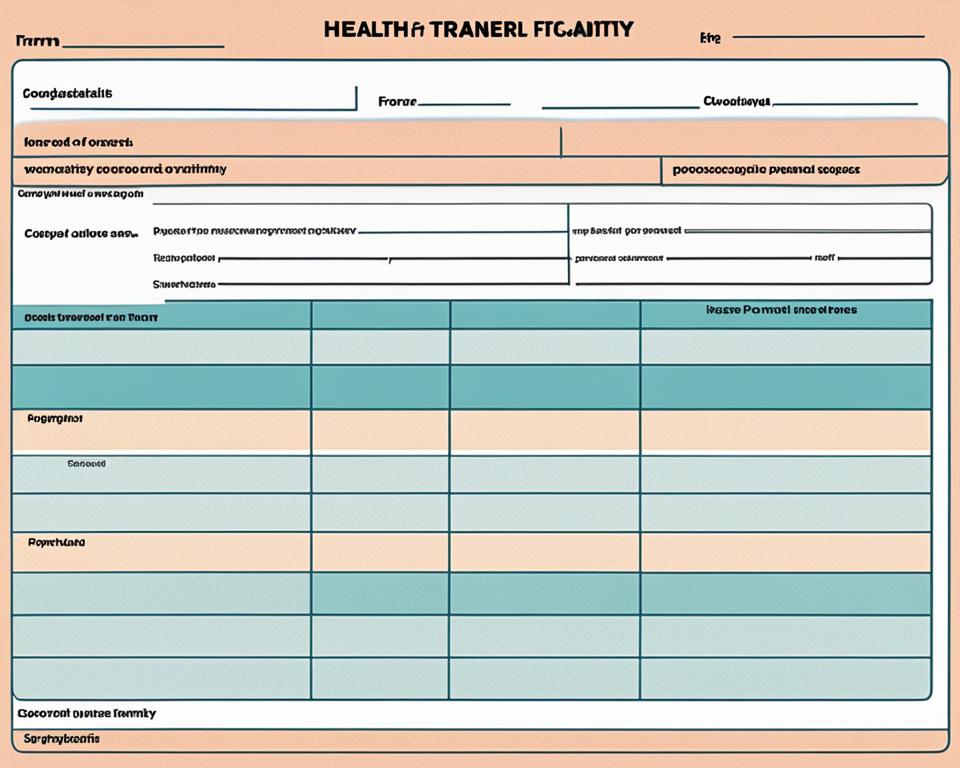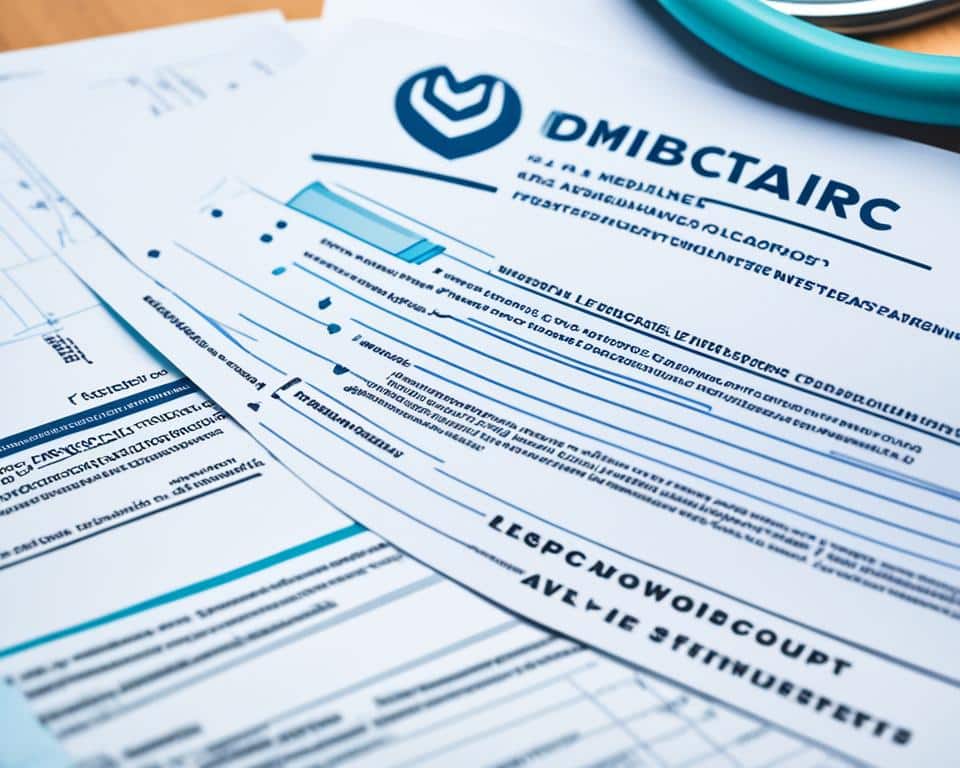
Understanding Medical Waivers For Personal Trainers
Even activities as positive as physical fitness have legal aspects. Fitness pros need to know about the medical waiver process. It’s crucial for keeping clients safe and managing legal risks. A personal trainer waiver form is key. It shows the client recognizes workout dangers and that the trainer follows a safe fitness plan. This step makes personal training safer and clearer for everyone involved.
The waiver is just a starting point, though. It’s a document that shows agreement, but it doesn’t stop accidents. So, in personal training, knowing about medical waivers is more than legal speak. It’s a core part of being a professional. It protects both the trainer and the clients who trust us with their health.
When I take on a client, the waiver is our trust’s silent protector. Clients rely on trainers not just for fitness guidance but also for keeping their health and interests safe in the gym. Understanding this is key for both devoted trainers and clients.
Key Takeaways
- Medical waivers are critical in personal training for legal protection and client awareness.
- These waivers are not a green light for negligence; rather, they are part of comprehensive risk management.
- Clarity and communication about the content of waivers build trust between trainers and clients.
- Waivers should be detailed and tailored to individual fitness programs and needs.
- Legal consultation is key to ensuring that waivers are enforceable and compliant with local laws.
- A good waiver complements liability insurance, offering a broad spectrum of protection for trainers.
The Role of Medical Waivers in Personal Training
When I step into the gym, I focus not just on workouts but also on my career’s safety. Medical waivers are essential in building a safety net around my business. These legal tools are critical for my profession’s success.
Defining Medical Waivers for Fitness Professionals
Requirements for medical waivers show the mutual responsibilities between me and my clients. They recognize training risks and agree not to hold me liable for injuries. This fosters transparency and consent at my job’s core.

Clients must know how to qualify for a medical waiver. I ensure they understand the document fully, not just sign it. This process highlights a waiver’s value— it’s about understanding, not avoiding responsibility.
Liability and Risk Management in Exercise Programs
I use medical waivers to create a culture of safety. This includes client screenings and talking about exercise risks. It prevents legal issues and builds client trust.
| Insurance Type | Coverage | Importance for Trainers |
|---|---|---|
| General Liability Insurance | Minimum of $1 million | Protects against claims of bodily injury or property damage. |
| Professional Liability Insurance | Covers various aspects | Essential for injuries during sessions and potential claims for medical expenses. |
| Keyman Insurance | Varies based on key individuals | Recommended for protecting businesses against loss of a key team member. |
| Umbrella Liability Insurance | Additional coverage | Provides further coverage on top of existing policies for significant claims. |
| Product Liability Insurance | Depends on product risk | Necessary for trainers selling products, especially with fitness facilities. |
I stay updated with laws like contributory and comparative negligence. Laws differ, with some states not enforcing waivers. Using waivers wisely and learning continuously is my goal. A strong waiver shows I value my clients’ safety and fitness goals.
Essential Components of a Medical Waiver
As a personal trainer, I must make sure each client is safe and informed legally. This means knowing all about medical waiver documentation. It’s key to stopping legal issues and making sure clients know what’s happening. Making a good medical waiver mixes clear words with important legal terms. This protects the client and my work too.
Key Clauses to Include in Your Medical Waiver
Creating medical waiver guidelines needs some must-have sections. I list workout risks and have clients accept these risks. It’s important the waiver protects me from things that aren’t my fault. Also, there’s a part that says the client is fit for exercise, showing I did my homework.
Understanding the Legal Terms and Protections
I also add things about what to do in a medical emergency. A strong waiver goes into details about my training and the risks. Talking with lawyers to keep the waiver updated is key. This shows I’m serious about my job and builds trust.
The rules for waivers have changed a lot since the 1990s. For example, during the Trump era, the focus was on work needs and fixed money, changing how Section 1115 waiver policy works with personal training. Now, the focus is more on making healthcare wider, changing things again for personal trainers. This shift in focus highlights the evolving priorities in healthcare policy, moving from stringent work-related requirements to broader access for underserved populations. For personal trainers, this means adapting to new dynamics in client eligibility and engagement, while also debunking common flexibility myths to better align fitness practices with diverse health needs. As policymakers continue to refine waivers, these adjustments remain essential for bridging gaps in both healthcare access and wellness education.
Knowing this history helps in understanding waivers better. States use waivers for big changes in healthcare, like who gets help and how much. But some waivers are for smaller things, which could affect trainer-client contracts. Teaching clients about these things makes the waivers stronger and more legal.
- Clarity in outlining potential health risks
- Statement of client responsibility for risk assumption
- Emergency medical treatment provisions
- Regular updates to reflect legal changes
I make sure my waivers cover these key points. This keeps everyone safe and upholds a caring and responsible training environment.
Differences Between Medical Waivers and Liability Insurance
As a personal trainer, I take it upon myself to promote fitness regime compliance and mitigate risks. A key part of my job is to know the differences between medical waiver application process and general liability insurance. Medical waivers are vital. They show that clients understand the risks of exercise and agree to them. This agreement protects both sides from future legal issues.
Waivers are used in many areas, like extreme sports and schools. This shows how vital they are across industries. In construction, waivers make sure all claims are resolved. This keeps relationships strong and finances stable.  Insurance companies use waivers strategically too. They might pay a bit more now to avoid lawsuits later. Waivers help balance the risk of injury against financial risks.
Insurance companies use waivers strategically too. They might pay a bit more now to avoid lawsuits later. Waivers help balance the risk of injury against financial risks.
- It’s important to know how long to keep liability documents. They should be stored for at least three years after an activity.
- Trainers are advised to use a 12-point font on release forms for easy reading.
- Legally, release forms must be printed separately from other information.
In contrast, general liability insurance acts as a safety net in different scenarios. If a client gets hurt or their property is damaged during a session, the insurance covers it. This might happen if, for example, a dumbbell is misplaced or equipment is faulty. So, while waivers deal with known risks, insurance covers unexpected liabilities.
Both waivers and insurance are crucial for ethical fitness training. They’re not just about avoiding legal issues. They help create a safe, responsible training environment. This builds trust between trainers and clients.
The Impact of Proper Waiver Implementation on Client Trust
Building trust with clients is key in a fitness journey. Via the informed consent process, I make the relationship transparent. This shows my commitment to their welfare. Seeing this, clients feel secure and more connected. Such integrity is vital for a strong trainer-client bond in my profession.
Building Strong Trainer-Client Relationships
I build trust by always communicating clearly and understanding their needs. I make sure health profiles fit the medical waiver criteria. This keeps them safe and avoids legal issues. It shows I value their safety as much as their fitness goals.
Communication and Clarity in Waiver Documents
Clear waivers are key in the fitness world. I simplify legal terms so clients can easily understand. Making things clear shows respect and bolsters our trust. Good communication keeps my practice ethical and trustworthy.



